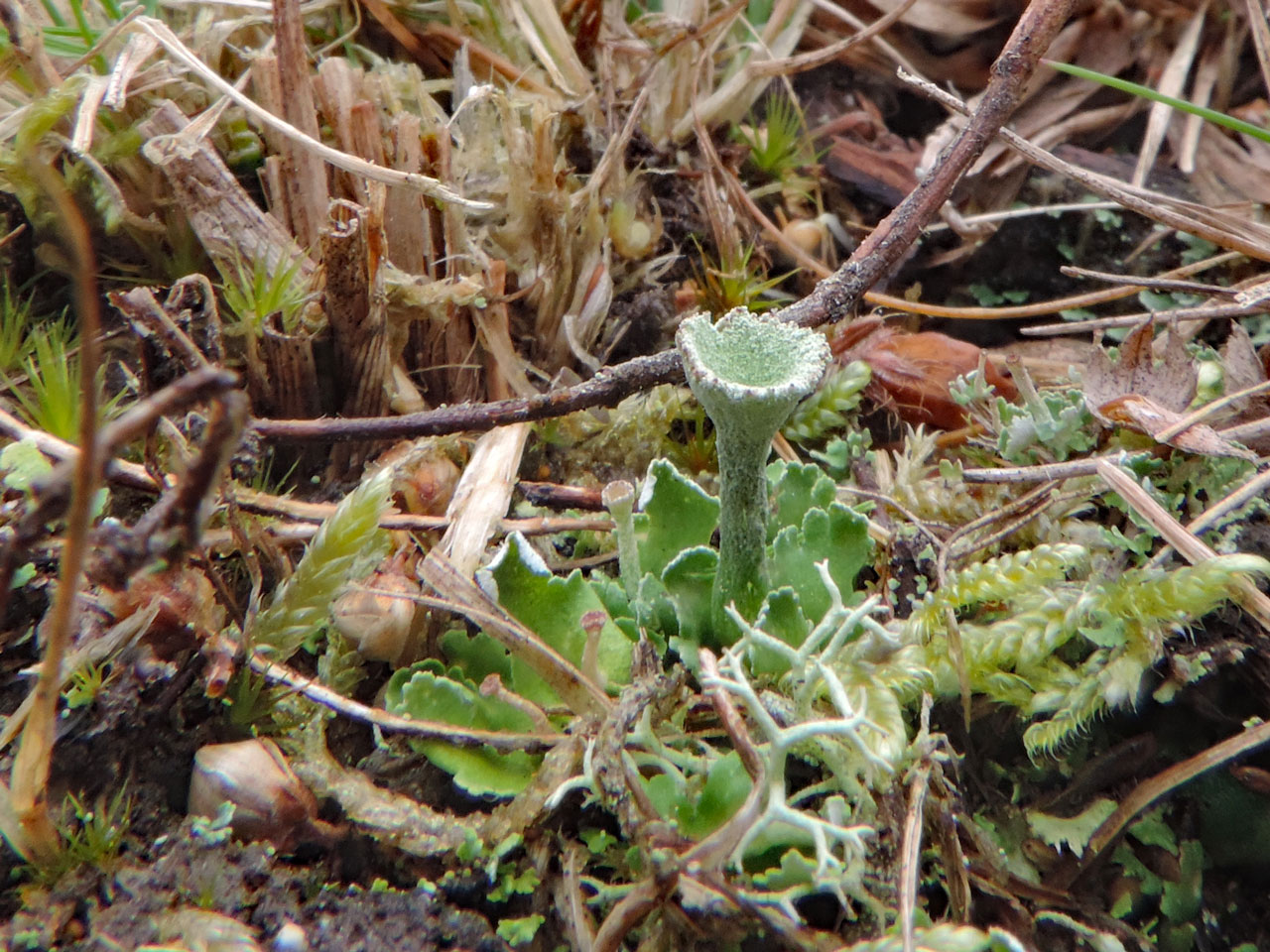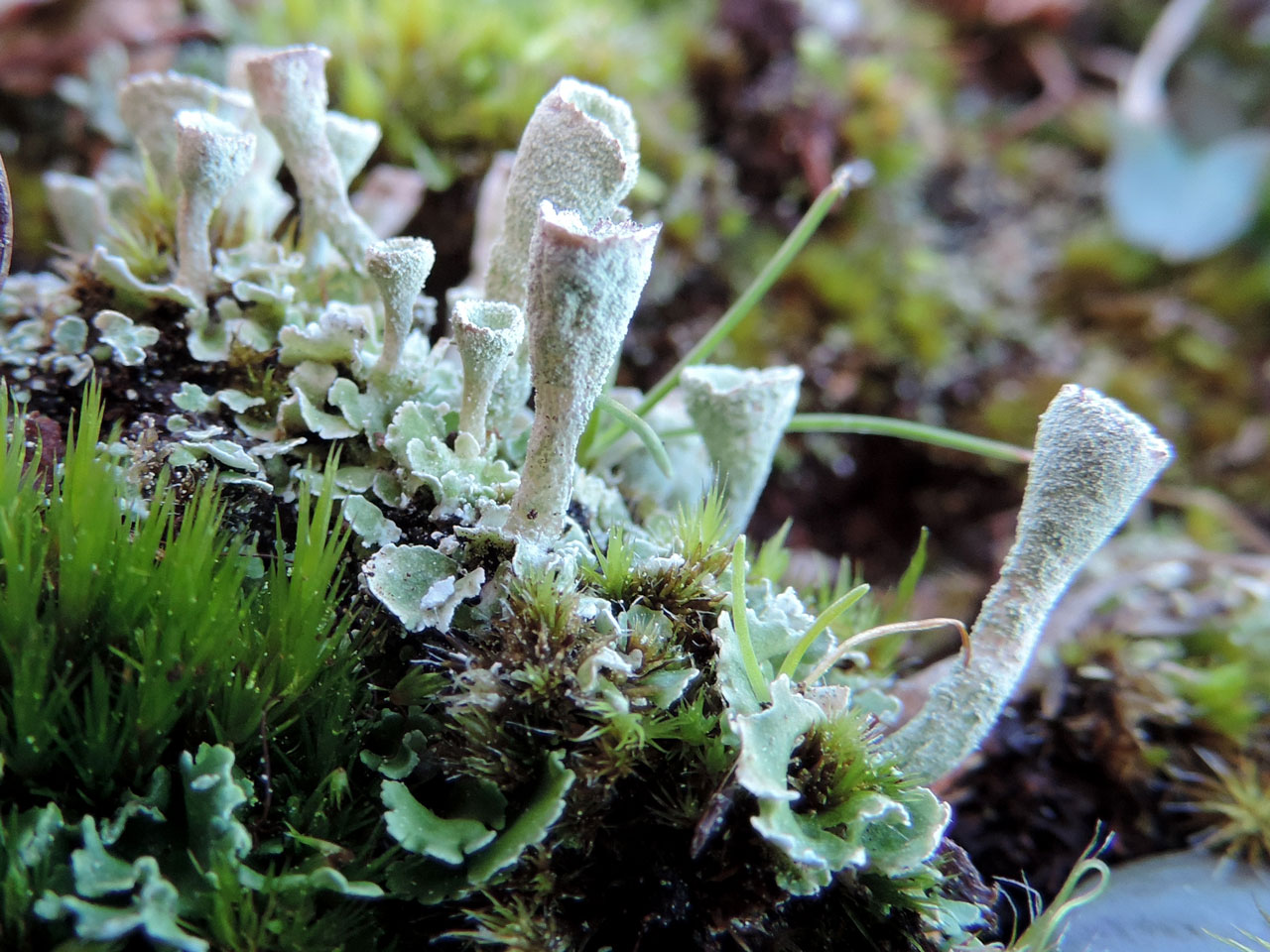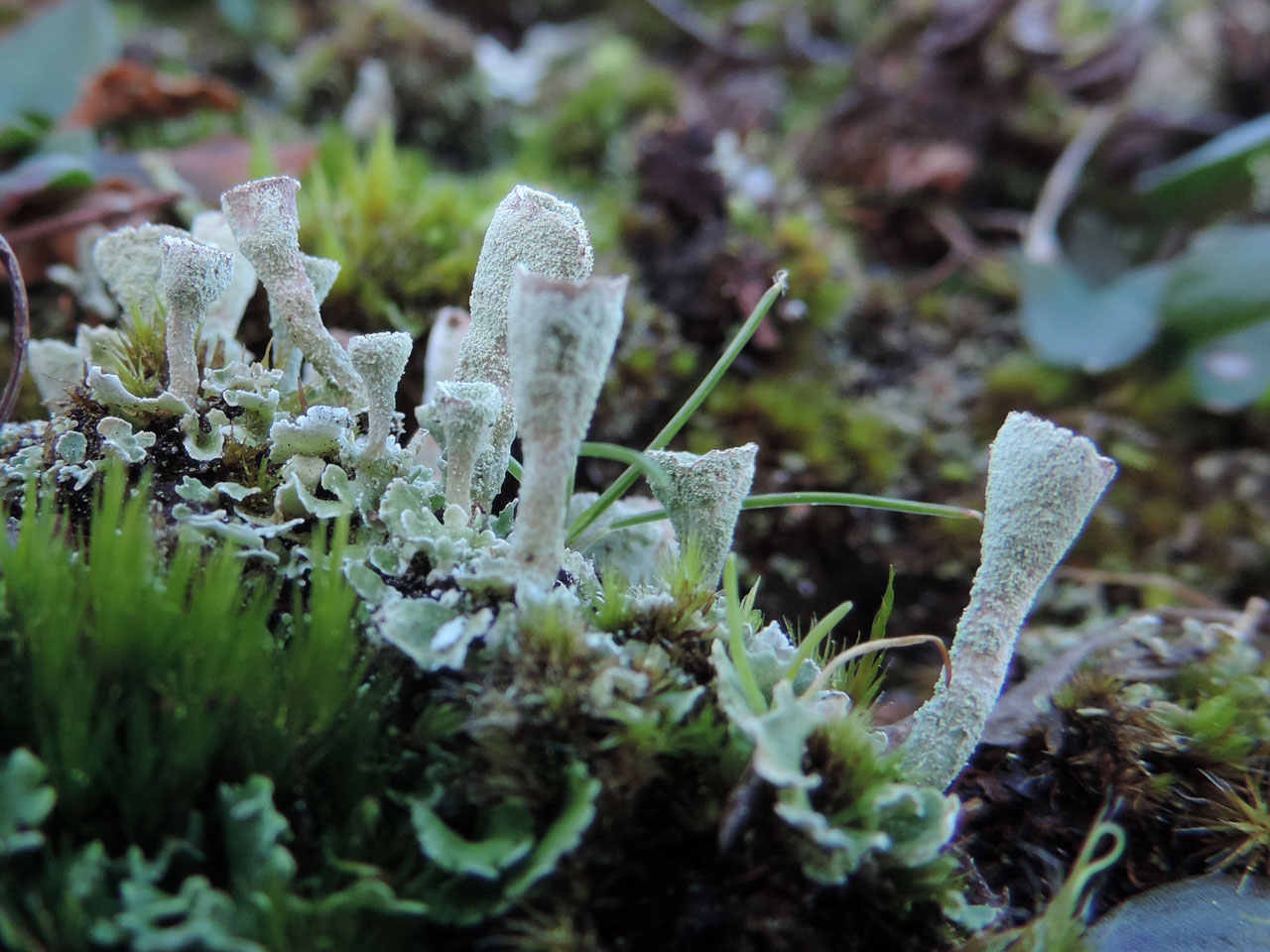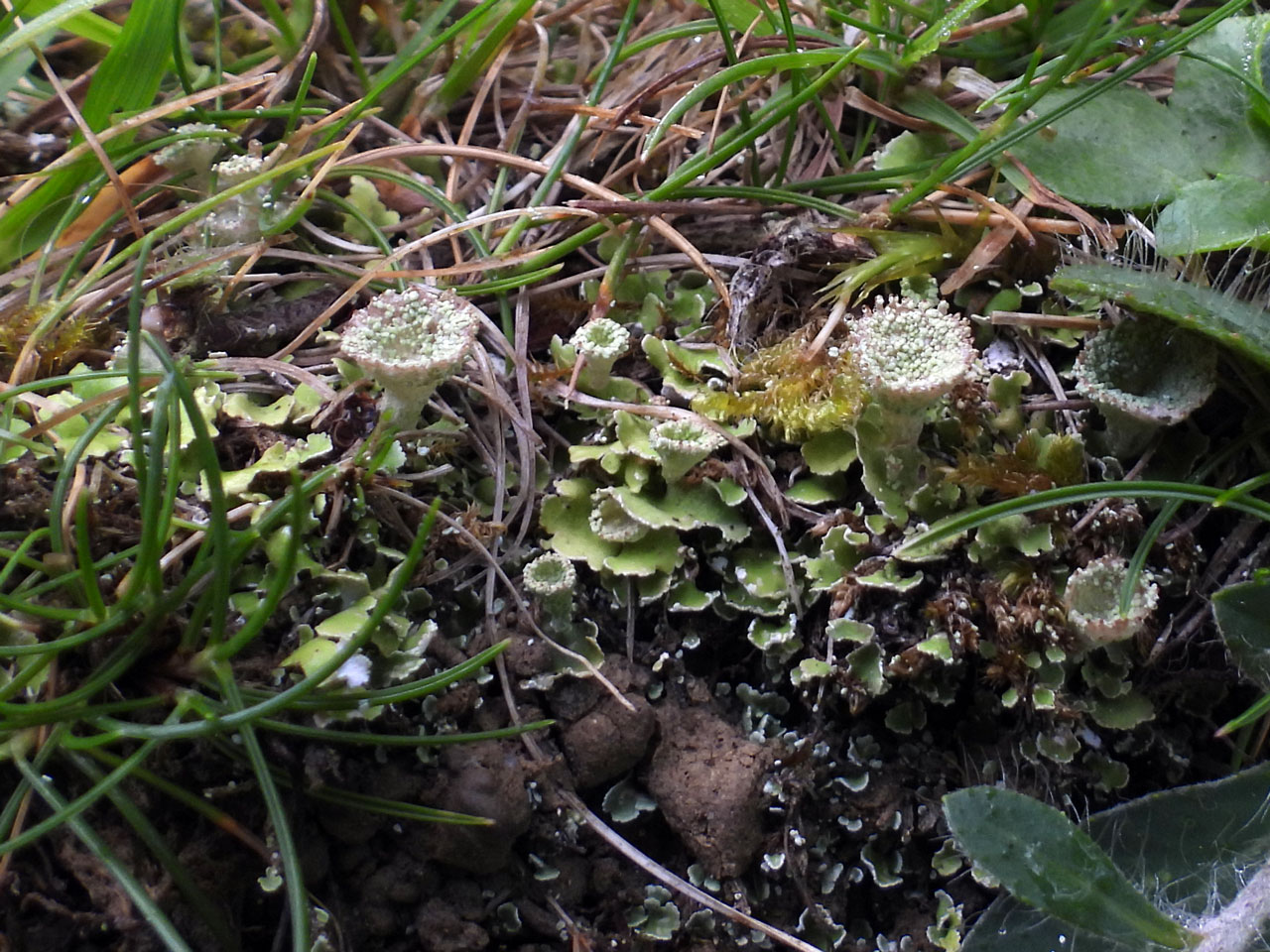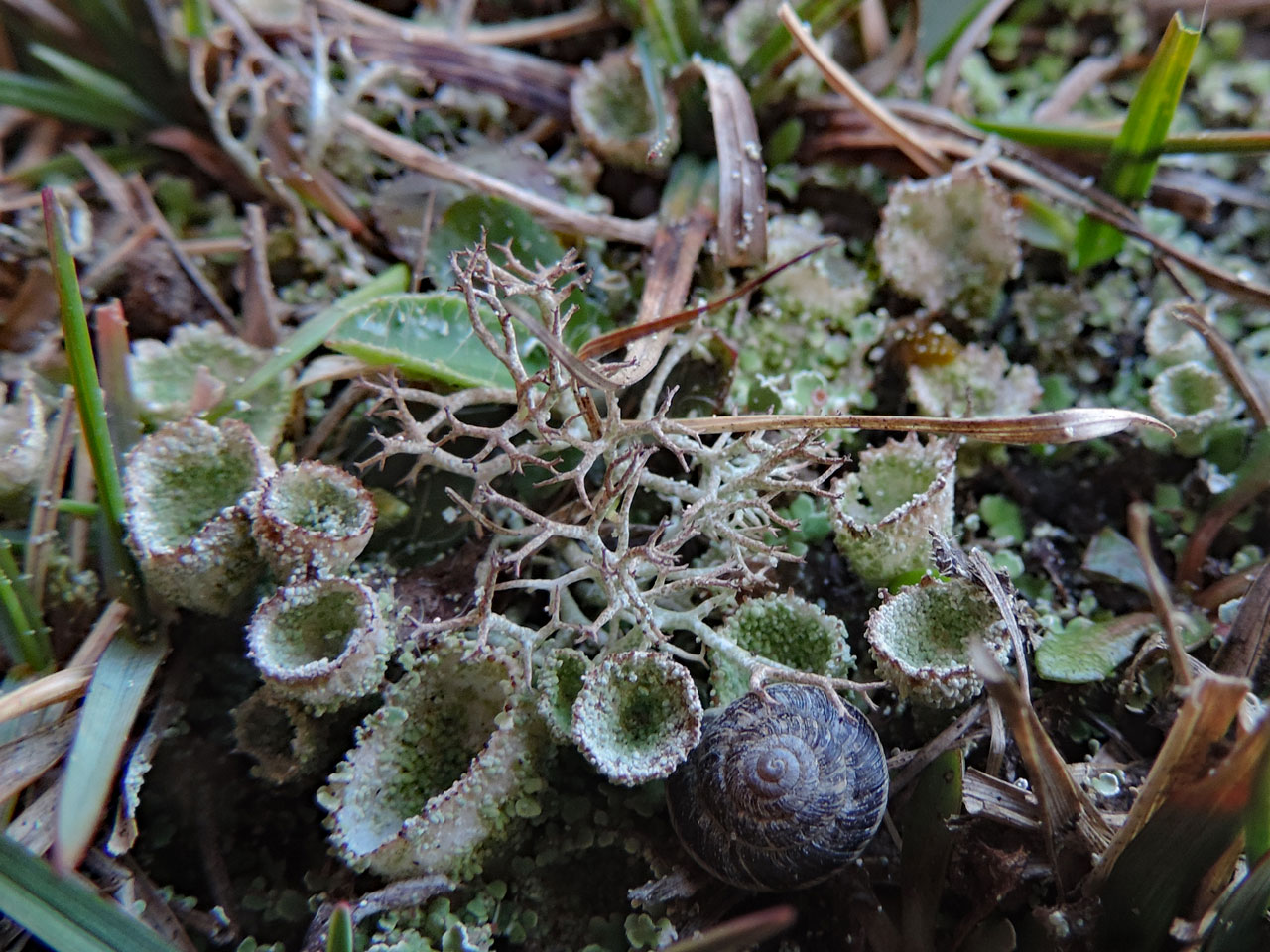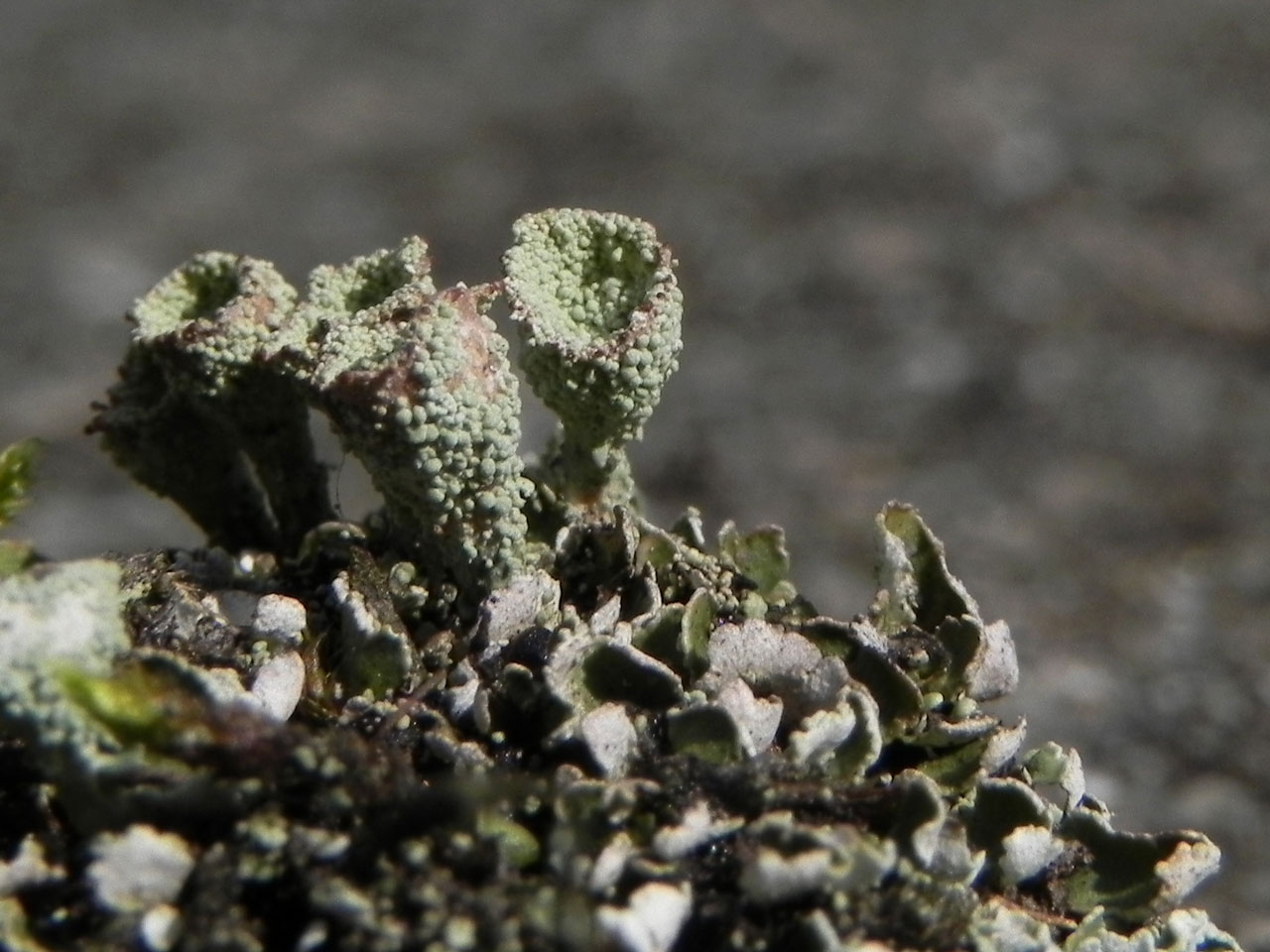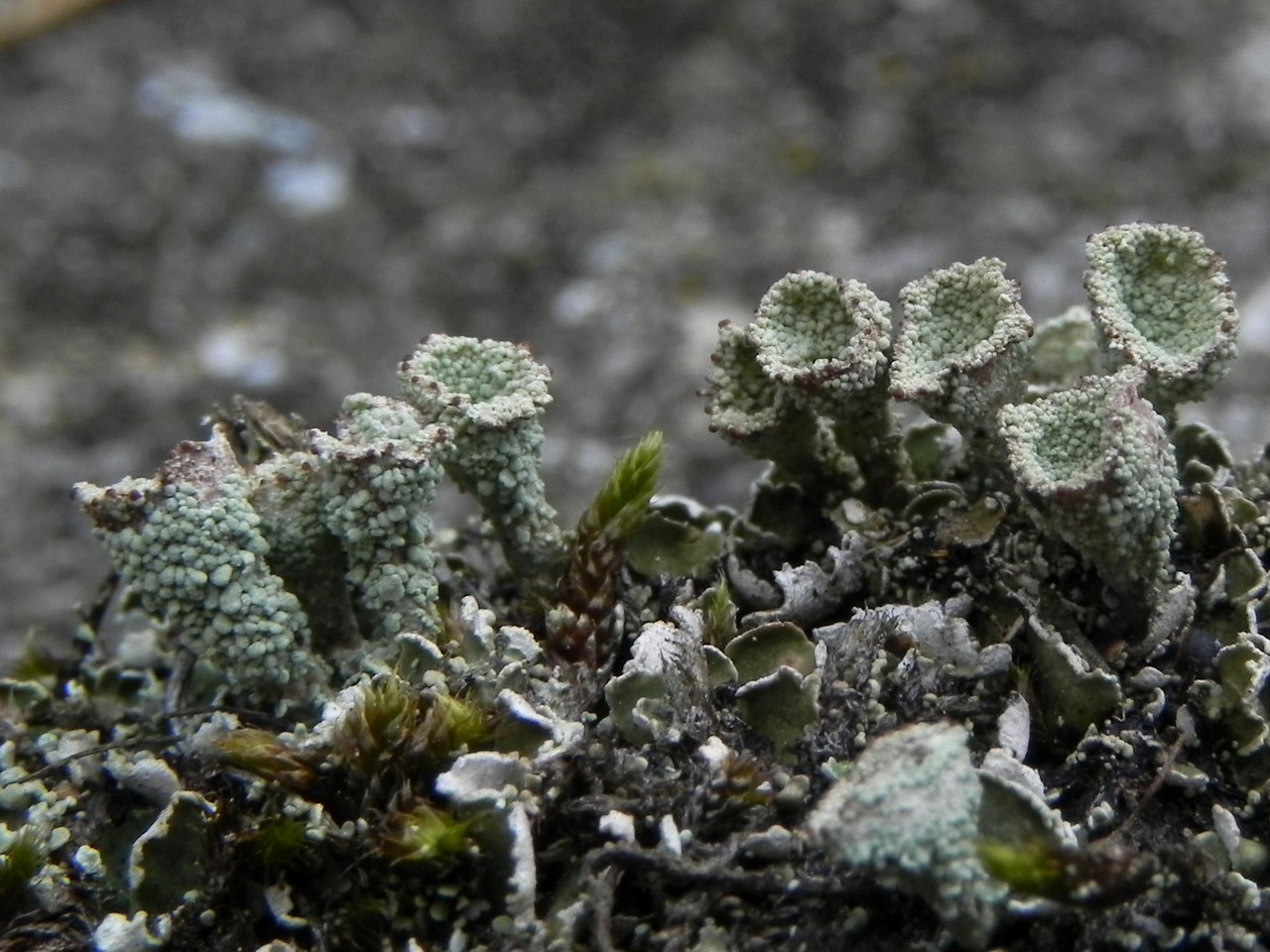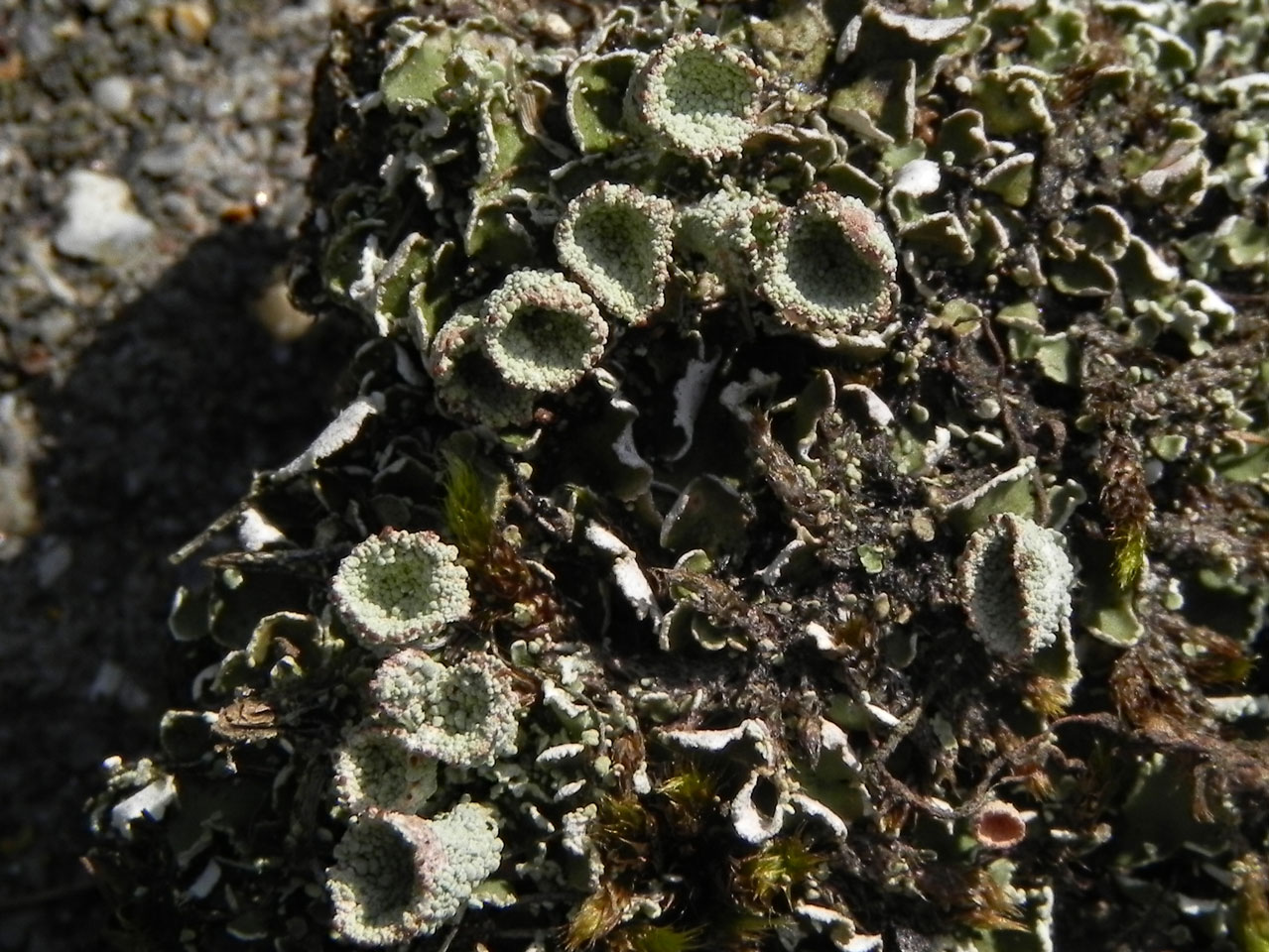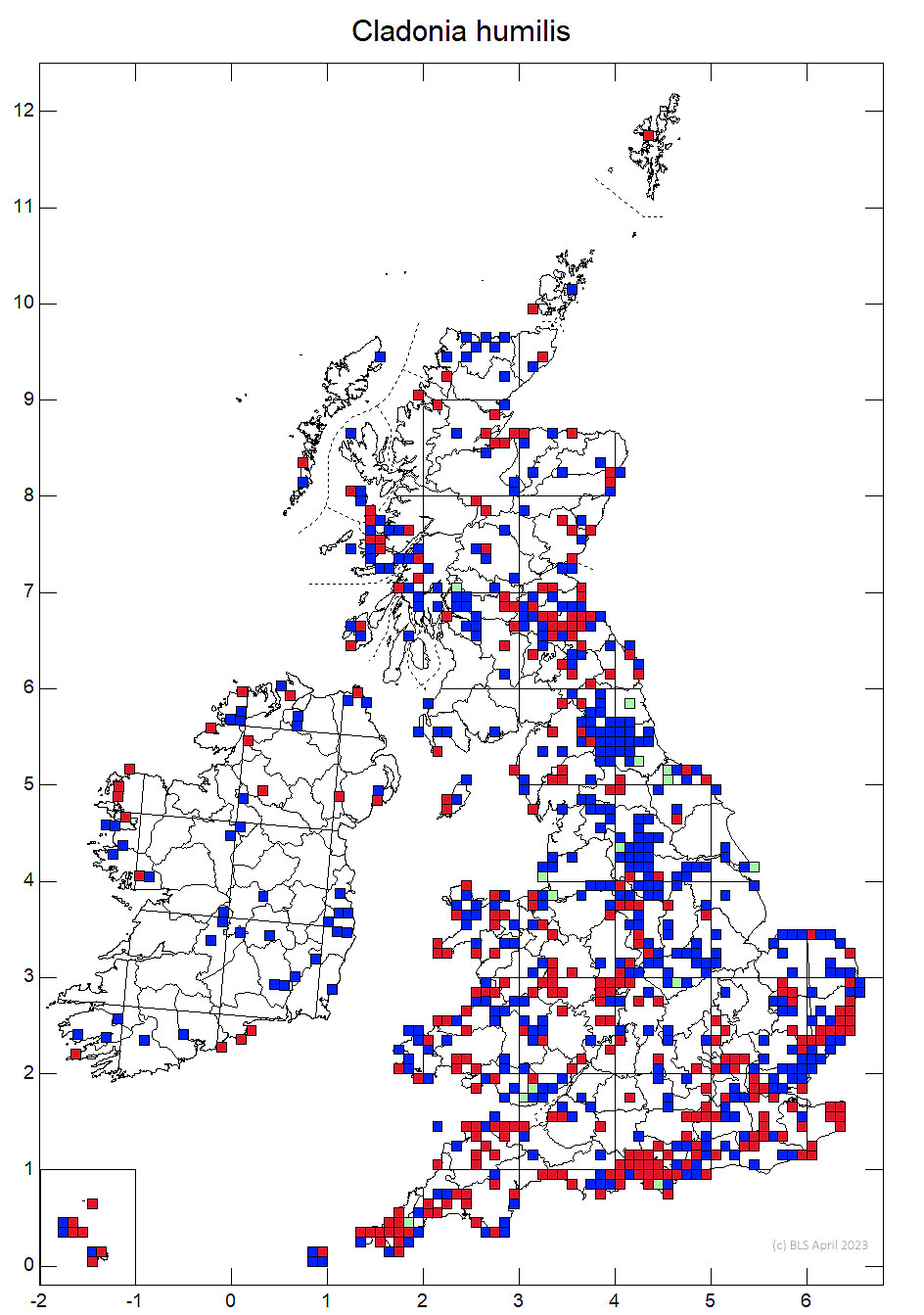Cladonia humilis
Cladonia conistea
Cladonia conoidea
A neat Pyxie Cup, with typical material easily separated by the combination of rather bright green-grey colours, short abruptly tapered cups, farinose soredia and a K+ yellow reaction. Occasional, and very confusing, forms may produce large corticate granules (schizidia) instead of farinose soredia. These can be confused with Cladonia pocillum, but the schizidiate morph of C. humilis has bright green-grey basal squamules with unturned ends showing the white underside, while Cladonia pocillum has browner squamules with downturned ends. Cladonia humilis is a common species of less acidic to neutral soils, usually in disturbed situations.
Podetia to 5 (–7) mm tall, grey or rather bright green-grey; cup to 6 mm diam., even, regular, only proliferating from the rim when apothecia are developed, abruptly tapered to a short stalk, often subsessile, continuously and persistently corticate for a 1–2 mm zone at the base, entirely densely farinose-sorediate above and within cup. A morph with large corticate bullate granules replacing the farinose soredia occasionally occurs. Basal squamules often rather large, to 5 mm diam., ± rounded, sparingly incised, often well-developed and forming a continuous carpet, bright green-grey with upturned ends showing bright white undersides when dry. Apothecia and pycnidia brown, rare, on scyphus rim. Thallus C–, K± yellow, KC–, Pd+ red, UV– (atranorin and fumarprotocetraric acids).
Characterised by the subsessile short regular cups, with farinose soredia and a smoothly corticate surface lower down the podetia. The only brown-fruited, sorediate species that contains atranorin in Europe. The K test can be problematic in this species, but soredia show a clear K+ yellow reaction if barely spotted (brushed with a wet pipette tip) with a very small amount of K. The K/UV (dry)+ bright yellow test is also effective. However, K– chemotypes are known from elsewhere (Burgaz et al. 2020).
The schizidiate morph with large corticate bullate granules replacing the farinose soredia has been confused with Cladonia pocillum, but this has browner imbricate compact rosettes of basal squamules, with recurved squamule tips, is K– and grows on more calcareous soils. This contrasts with squamules of the schizidiate morph which are bright green-grey with upturned ends showing bright white undersides when dry. The schizidiate morph was considered possibly to belong to the American species C. pulvinella or C. hammeri, but Pino-Bodas et al. (2013a) showed that such European material clusters with C. humilis.
Cladonia conista was considered only as a bourgeanic/fumarprotocetraric acid chemotype of C. humilis by James (2009), but is treated as a separate species by Ahti & Stenroos (2013), and Pino-Bodas et al. (2012b, 2013a) showed that there are clear sequence differences between the two taxa. C. fimbriata has the podetial surface completely covered by farinose soredia and is K–. C. chlorophaea has a granulose corticate surface.
Mainly on dry or sandy, less acid but non-calcareous ground, especially on recently disturbed soils, roadsides, sea cliffs, bonfire sites and rockery stones and paths in suburban gardens, absent from montane areas. The schizidiate morph is typically found in more base enriched but still non-calcareous soils.

Frequent and widespread in the lowlands, throughout Britain and Ireland.
Ahti, T. & Stenroos, S. (2013). Cladoniaceae. In: Ahti, T., Stenroos, S., & Moberg, R. (eds), Nordic Lichen Flora 5: 1–117.
James, P.W. (2009). Cladonia. In Lichens of Great Britain and Ireland (Smith, C.W., Aptroot, A., Coppins, B.J., Fletcher, A., Gilbert, O.L., James, P.W. & Wolselsey, P.A. eds): 309–338. London: British Lichen Society.
Pino-Bodas, R., Ahti, T., Stenroos, S., Martín, M.P. & Burgaz, A.R. (2013a). Multilocus approach to species recognition in the Cladonia humilis complex (Cladoniaceae, Ascomycota). American Journal of Botany 100: 664–678.
Pino-Bodas, R., Martín, M.P., Burgaz, A.R. & Lumbsch, H.T. (2013b). Species delimitation in Cladonia (Ascomycota): a challenge to the DNA barcoding philosophy. Molecular Ecology Resources 13: 1058–1068.
Pino-Bodas, R., Sanderson, N., Cannon, P., Aptroot, A., Coppins, B., Orange, A. & Simkin, J. (2021). Lecanorales: Cladoniaceae, including the genera Cladonia, Pilophorus and Pycnothelia. Revisions of British and Irish Lichens 19: 1-45. Link
Sanderson, N. A. (2017) The New Forest Heathland Lichen Survey 2011 – 2015. A report by Botanical Survey & Assessment to Natural England, Forest Enterprise & The National Trust. Link
Text by Neil A Sanderson based on Pino-Bodas et al (2021)
